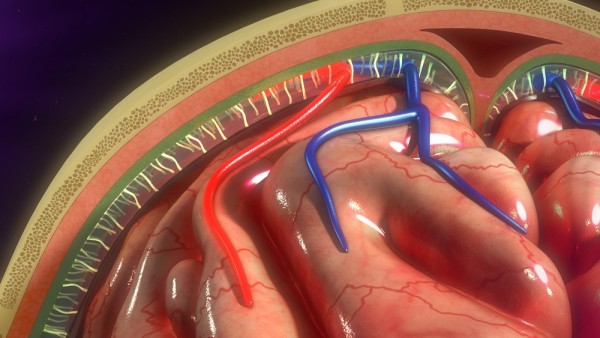
April 24 has been marked by the Confederation of Meningitis Organizations as World Meningitis Day – a time during which the facts, statistics, and impact of meningitis can be publicized.
The Confederation of Meningitis Organizations is dedicated to eliminating meningitis – by spreading the word about vaccinations, preventative measures, and early diagnosis that can help save lives.
Meningitis is well-known to most nurses. This inflammation of the membranes covering the spinal cord and the brain can be caused by viral infection, bacteria, and other micro-organisms.
Symptoms in adults can include nausea and vomiting, confusion, neck stiffness, and increased sensitivity to light and loud noises. Meningitis is especially dangerous for children – they often don’t show specific symptoms, merely demonstrating irritability, drowsiness, or poor feeding habits.
In both children and adults, untreated meningitis can lead to issues like deafness, hydrocephalus, or even brain damage – and acute bacterial meningitis is almost always fatal if left untreated.
Meningitis is incredibly dangerous. Left undiagnosed, acute meningitis can kill in mere hours. So it’s crucial that all nurses be aware of the most common, easily recognizable signs of meningitis infections – so that appropriate next steps can be taken by medical staff. Read on, and learn how to recognize the 5 most common signs of meningitis.
- Severe Headaches
Generally, headaches are the most common early sign of meningitis. About 90% of all meningitis cases involve severe headaches, making it a very common sign that a patient may have meningitis. However, the presence of severe headaches alone is not nearly enough to make a positive meningitis diagnosis, as headaches can be caused by hundreds of diseases.
However, jolt accentuation can help narrow down the diagnosis to meningitis. In this technique, the afflicted patient is asked to rotate their head horizontally at a rate of 2 rotations per second. If the patient’s headache is exacerbated and pain increases, the patient may be suffering from meningitis, and a lumbar puncture to confirm this diagnosis may be in order.
- Severe Neck Stiffness (Nuchal Rigidity)
Severe neck stiffness – nuchal rigidity – occurs in about 70% of all bacterial meningitis cases. The inflammation of the meninges can cause increased muscle tone and neck stiffness, which can be tested by asking a patient to touch their chin to their chest. If a patient is unable to do so, they may be suffering from meningitis.
- High Fever
High fevers with corresponding nausea and vomiting are commonplace in meningitis, though their presence alone is not enough to make a positive diagnosis. Generally, fevers caused by bacterial meningitis are very sudden, often taking only a few hours to reach their peak. Gaining an understanding of how quickly a patient’s fever has occurred can be valuable when attempting to diagnose meningitis.
- Altered Mental State
An altered mental state – delirium, confusion, and even hallucinations – is another extremely common sign of meningitis. An altered mental state represents the final piece of the “meningitis triad”, commonly used to diagnose meningitis cases.
About 44-46% of patients with bacterial meningitis have all three of these above symptoms – neck stiffness, high fevers, and an altered mental state, and most meningitis patients exhibit at least 2 out of 3 of these symptoms. In addition, if a patient presents with none of these 3 symptoms, meningitis can be eliminated as a diagnosis with 99%-100% accuracy.
This makes recognizing and understanding the above symptoms crucial. If multiple symptoms are present, you may be able to quickly recognize a case of meningitis – while the lack of all 3 symptoms provides you with an easy way to eliminate meningitis as a potential diagnosis.
- Photophobia and Phonophobia
The infection of the meninges can cause increased sensitivity to both light and sound – patients should be observed for excessive irritation, fear, or panic caused by loud noises or bright lights. An adverse reaction to intense lights or sounds can be a sign of meningitis.
Understand The Signs – And Save A Life
Recognizing the signs and symptoms of meningitis isn’t just helpful in a clinical setting – rapid-onset bacterial meningitis can occur anywhere, and is dangerous and life-threatening. By understanding the most common signs of a meningitis case, you can increase your ability to provide care to patients – and help keep your family and friends safe, even when you’re not at work.
Early diagnosis is critical to saving lives. Patients who are properly treated for bacterial meningitis have an 85% full-recovery rate. However, patients who are not diagnosed or fail to get appropriate treatment have a mortality rate of 70% or more.
So recognize these signs of meningitis, and tell your friends about the most common signs and symptoms of meningitis – you might just save a life! If you’d like to further your involvement in this cause, you can spread awareness by visiting the World Meningitis Day homepage, and getting further involved in the Confederation of Meningitis Organizations.

















